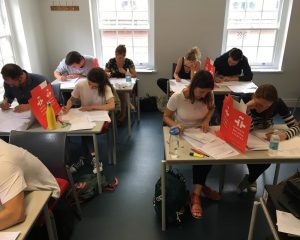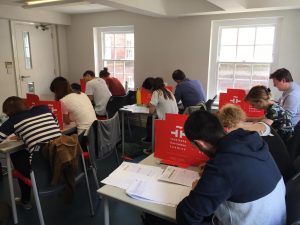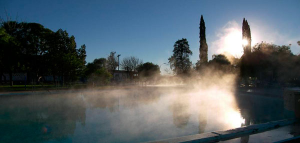El español en cifras según el «El español en el mundo 2023. Anuario del Instituto Cervantes»
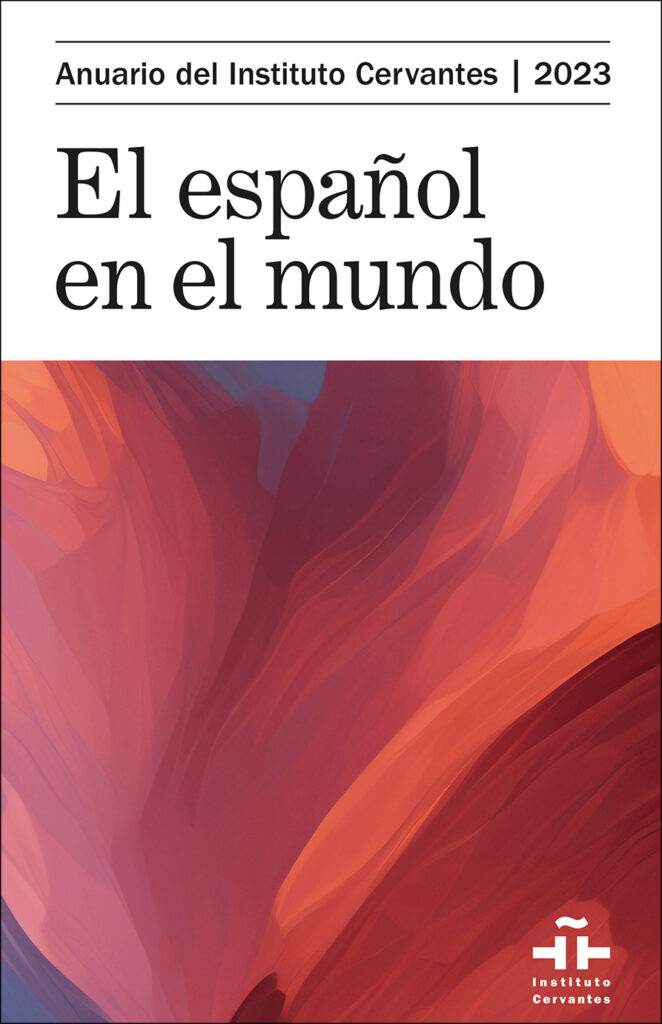
✅En 2023, casi 500 millones de personas tienen el español como lengua materna (el 6,2 % de la población mundial).
✅El grupo de usuarios potenciales de español en el mundo (cifra que aglutina al Grupo de Dominio Nativo, el Grupo de Competencia Limitada y el Grupo de Aprendices de Lengua Extranjera) supera los 599 millones (el 7,5 % de la población mundial).
✅El español es la segunda lengua materna del mundo por número de hablantes, tras el chino mandarín, y la cuarta lengua en un cómputo global de hablantes (dominio nativo + competencia limitada + estudiantes de español), después del inglés, el chino mandarín y el hindi.
✅ El número de hispanohablantes seguirá creciendo en las próximas cinco décadas, pero su peso relativo disminuirá de manera progresiva de aquí a final de siglo. En 2100, solo el 6,4 % de la población mundial podrá comunicarse en español.
✅ En 2060, Estados Unidos será el segundo país hispanohablante del mundo, después de México. El 27,5 % de la población estadounidense será de origen hispano.
✅Más de 23 millones de alumnos estudian español como lengua extranjera en 2023. En concreto, 23.035.198.

Puedes ver aquí la presentación de «El español en el mundo 2023. Anuario del Instituto Cervantes», la principal publicación académica de la institución, en la que cada año se actualizan los datos principales sobre la lengua española en el mundo:
Y consultar todo el el volumen en la web del Instituto Cervantes: https://cvc.cervantes.es/lengua/anuario/anuario_23/default.htm
Online Winter 2021 Spanish Courses
Due to the ongoing Covid-19 situation all our 2021 Winter Courses will be taught online in a friendly and supportive environment using video conferencing and distance learning tools. Check all our courses here.
«I am enormously grateful to all at Instituto Cervantes London who conspired to get me over the finish line»
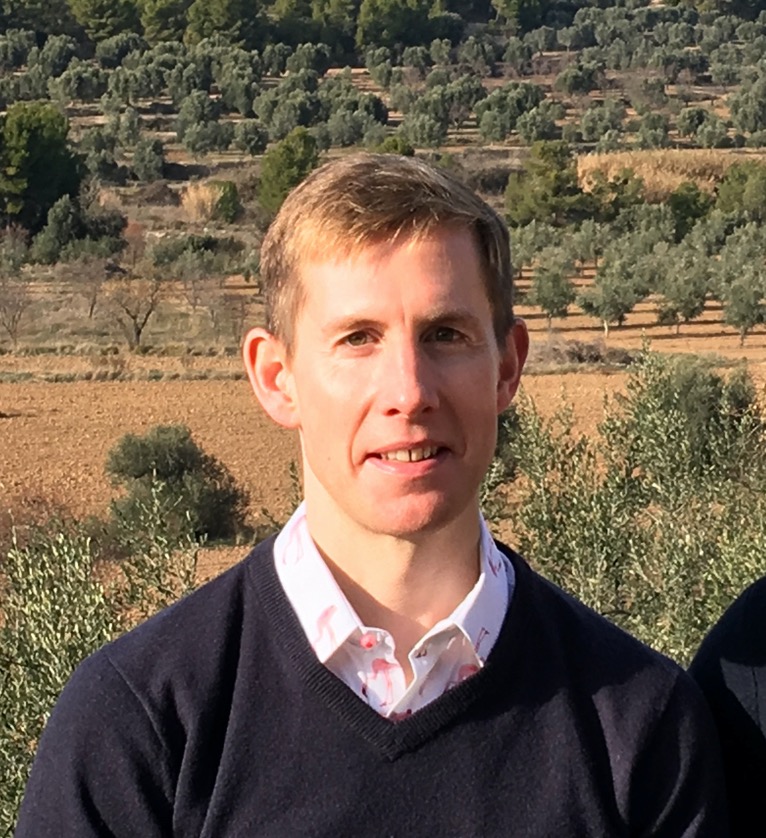
Today we chat with one of our students, Joseph McGowan, who just passed DELE C2 exam and previously achieved DELE C1. Joseph has studied Spanish at Instituto Cervantes in London for a long time and he prepared himself for this exam with our teachers. He enjoys learning Spanish every week and travelling to the beautiful Catalonian town of Sitges.
¿Why did you decide to take DELE exam?
I decided to take the DELE exam, not out of any academic, professional or administrative necessity, but simply as a personal challenge. I wanted to learn Spanish, but I knew I had to have a deadline, otherwise I’d pootle along aimlessly. Procrastination is an art form I’ve mastered, so I needed some impetus to turn the desire to learn into a reality. Also, with years of unstructured learning of French under my belt, I knew that the vague target of «I want to speak a language» can be like trying to reach the end of the rainbow: you never quite get there; there’s always a bit further to go. The feeling you can speak a language successfully comes and goes like the weather, depending on mood, physical state, subject-matter, interlocutor, etc. So I wanted an objective and solid milestone by which to measure my progress.-
How was the preparation? What was the most difficult part for you?
Without doubt, the writing was the most difficult element. I was a terrible schoolboy, never did my homework, didn’t take any further exams after my GCSEs, so once again being faced with The Demon Blank Sheet of Paper waiting to be filled was not only an academic but also a psychological barrier to break through. Fortunately I had a fantastic teacher who was extremely patient and generous with her time and effort. She offered to be my sherpa to guide me up the mountain to the exam. And that mountain certainly did seem steep, and rocky. But once I got there, it was amazing to look back and see how far I’d come.
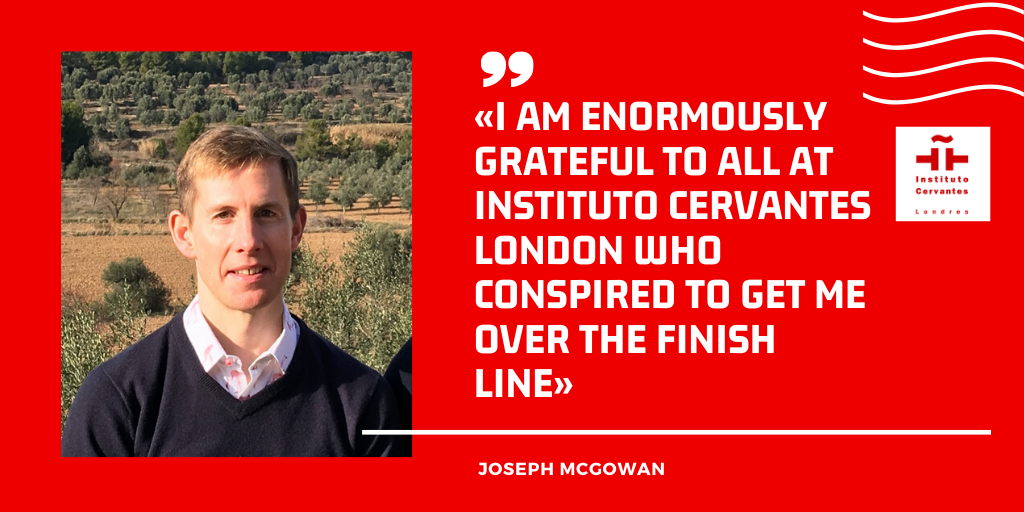
How did the DELE preparation classes at Instituto Cervantes London help you?
As you’ll have gathered, for me the classes were indispensable. Left to my own devices, I could never have passed the C1 and C2 exams. At an advanced level, even in their native tongue, I think someone would struggle to pass a CEFR language exam without preparation. You have to know the format of the exam; for the writing, there are models of text you may not be familiar with; and learning to manage the time in the exam is essential and, at least to me, did not come naturally. My teacher carefully planned each class so there was a progression, which stopped me spending too much time on one particular element at the expense of another. She was there to remind me that you only have to be good enough to pass the exam, there’s no point in trying to exceed the requirements. Of course, perfection is the enemy of good, but it’s sometimes hard to judge alone. In the moments when my determination wobbled and I thought, «Why am I putting myself through this?», I knew I couldn’t let her down and back out now, after we’d both invested so much time and effort.
Looking back, the fact I embarked upon this journey in my 40th year probably isn’t a coincidence. At a time of taking stock of one’s life, it’s not a bad way to live out a mid-life crisis! I am enormously grateful to all at Instituto Cervantes London who conspired to get me over the finish line (twice). The journey is not over, of course — I am now working on Spanish literature with my teacher — but I am very pleased, even proud, to have put those two important milestones behind me.
If you want to take a DELE exam, you can enrol through the online shop of Instituto Cervantes London (CLIC Londres).
These are the upcoming exam sessions at Instituto Cervantes London:
- 11 September (written and oral exam), DELE for Young Learners: Levels A1 and A2/B1
Enrolment deadline 15 July - 11 September (written exam), 11/12 September (oral exam). Level A1, A2, B1, B2, C1, C2
Enrolment deadline 15 July - 13 November (written and oral exam), DELE for Young Learners: Levels A1 and A2/B1
Enrolment deadline 7 October - 14 November (written exam), 13/14 November (oral exam). Levels: A1, A2, B1, B2, C1, C2
Enrolment deadline 7 October
National translation competition for undergraduate students
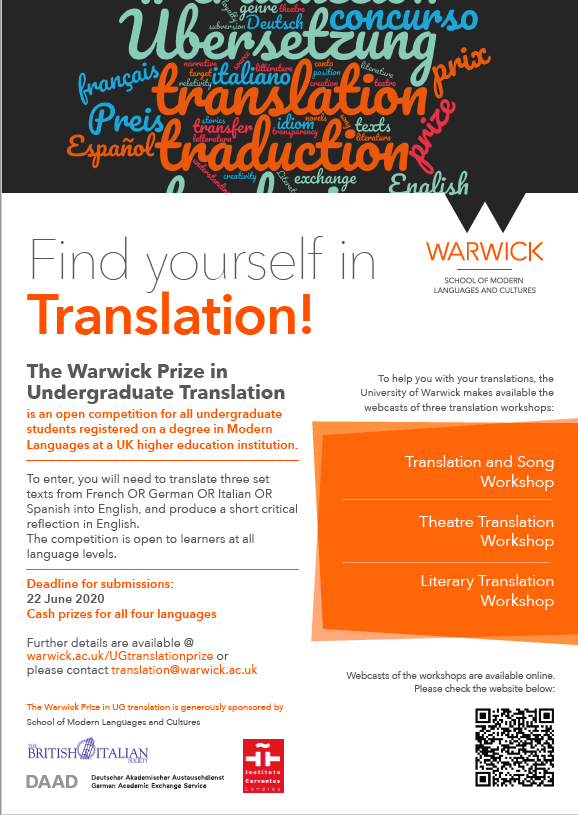
We would like to draw your attention to a national translation competition for undergraduate students in Modern Languages in the UK, including those doing Spanish / Hispanic Studies.
The Warwick Prize in Undergraduate Translation aims to encourage students to engage with languages outside the classroom so that they can see that translation is a fun and creative activity which can be productive at all linguistic levels. See poster attached and below.
How does the Prize Work?
To enter, students will need to complete a translation portfolio. This portfolio will include:
- Translations of three set texts from EITHER French OR German OR Italian OR Spanish into English – available here.
- A critical reflection in English (300 words) on the translation approach.
- A completed entry form
To help students with their translations, the University of Warwick makes available on its website the webcasts of three translation workshops on (1) translation and song, (2) translation and theatre, and (3) translation and literature.
The set texts have been released on Thursday 7 May 2020 and entries can be submitted until 22 June 2020 at 5pm. The winners will be announced in Autumn 2020, with cash prizes for all the four languages.
Further information, including contact details and instruction for the submission of entries (via email only) can be found here.
The Warwick Prize in Undergraduate Translation is generously sponsored by the School of Modern Languages and Cultures, the German Academic Exchange Service (DAAD), the British Italian Society, and the Instituto Cervantes – London.
Spanish, a language spoken by 580 million people, and 483 million of them native
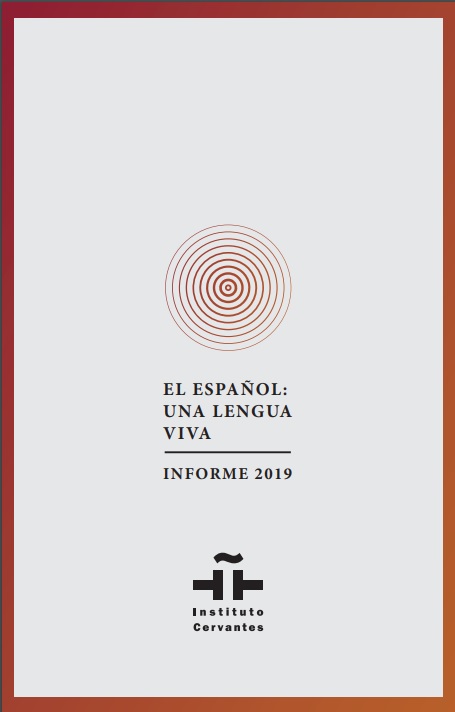
A total of 580 million people speak Spanish in the world, 7.6% of the world’s population. Of these, 483 million – three million more than a year ago – are native Spanish speakers, which makes Spanish the world’s second mother tongue by number of speakers. In addition, studies have shown that these 22 million people span across 110 countries. Spanish is the third most used language on the internet, where it has great growth potential.
Which is unfortunate, montreal online casino bids 100 Bonus Spins for the game Book of Dead from Playn GO are included in this welcome offer!
These are some of the most relevant data collected by the “Yearbook of Spanish in the world 2019”, done by Instituto Cervantes, presented by its director, Luis García Montero, accompanied by people who were in charge for its content, in an event open to the public.
David Fernández Vítores, author of the study, believes that Brexit will be positive for Spanish in the European Union because it will increase the proportion of Spanish speakers. His 90-page study offers an updated and very reliable census of Spanish speakers and contains «very positive and innovative data», such as the importance given to Spanish in the Linkedin network, a space that is analyzed here for the first time .
The first section of the book introduces the updated data on the Spanish language in areas such as demography, teaching and learning, Internet and social networks, science and culture, its international influence and economic value, as well as its diplomatic presence.
Demography:
Almost 483 million people have Spanish as their mother tongue. (The 2018 Yearbook estimated native speakers at 480 million).
The number of potential Spanish users exceeds 580 million. This figure brings together the groups of native domain, limited competence and foreign language students. Last year it was 577 million.
Spanish is the second mother tongue in the world by number of speakers, only behind Mandarin Chinese.
It is the third language in the global computation of speakers (native domain + limited proficiency + Spanish students) after English and Chinese.
7.6% of the world’s population is today Spanish-speaking. The percentage is expected to increase one tenth (7.7%) in 2050.
In 2100, this percentage is expected to fall to 6.6%, mainly due to the decline in inhabitants of Latin America in the face of the population explosion in several African countries, among other factors.
For demographic reasons, the percentage of the world’s population that speaks Spanish as a native language is increasing, while the proportion of Chinese, English and French speakers decreases.
In 2060, The United States is anticipated to be the second Spanish-speaking country in the world after Mexico: almost one in three Americans will be Hispanic.
Study of Spanish as a foreign language:
A total of 21,882,448 students study Spanish as a foreign language (67,000 more than last year), according to data recorded in 110 countries and at all levels of education.
The Cervantes Institute estimates that the real demand is 25% higher, since the data does not also reflect private education.
In the US, Spanish is the most studied language at all levels of education.
In the United Kingdom, Spanish is perceived as the most important language for the future.
In the European Union, France, Italy, United Kingdom and Germany (in this order) are the countries with the highest number of Spanish students.
The teaching of Spanish in English-speaking countries such as Canada (with 90,000 students), Ireland (47,000), Australia (34,000) and New Zealand (36,000) has also grown significantly.
Economy:
The contribution of all Spanish-speaking countries to global GDP (Gross Domestic Product) is 6.9%. A higher percentage than that generated by countries that have French as their official language.
In the case of Spanish, the common language multiplies by four bilateral exports among Spanish-speaking countries.
Spanish would be the fourth most powerful language in the world, slightly behind French and Chinese, and a great distance from English.
Spanish occupies the third position in the UN (United Nations Organization) and fourth in the scope of the European Union.
Spanish on the Internet:
It is the third most used language on the Internet after English and Chinese.
8.1% of internet communication occurs in Spanish.
It is the second most used language on Wikipedia, Facebook, Twitter and Linkedin. Of the 580 users of the Linkedin social network, 55 million use Spanish to a greater or lesser extent. Most of them (43 million), in Central and South America.
Spanish has a high potential for growth on the Internet due to the average internet availability in Spanish-speaking countries (which is 65.8%, still far from penetration in Spain, which exceeds 92%).
Mexico is among the ten countries with the highest number of users on the Internet.
Spanish in science and culture:
After English, Spanish is the second language in which most scientific documents are published.
Although the participation of Spanish-speaking countries in world scientific production has grown since 1996, Spanish scientific and technical research is relegated to a secondary level in the international arena.
Publishing Market:
Spain is the third largest exporter of books in the world, after the United Kingdom and the United States.
Two Spanish-speaking countries – Spain and Argentina – are among the top 15 book producers in the world, according to the International Publishers Association.
Spain occupies the eighth place in book production, and the ninth in the market value of the publishing sector.
Although the publication of books in electronic format is increasingly widespread, its market share is still low in Spanish-speaking countries.
READ THE FULL REPORT: «Yearbook of Spanish in the world 2019»
TV series and films to help you improve your Spanish
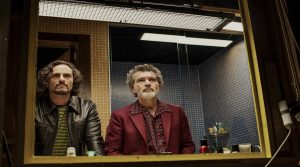
Dolor y gloria (English title: Pain and Glory)
It is a 2019 Spanish drama film directed and written by Pedro Almodóvar. It stars Antonio Banderas, Asier Etxeandia, Penélope Cruz, Julieta Serrano and Leonardo Sbaraglia. The film narrates a series of reencounters of Salvador Mallo, a film director in his decline. Some of these reencounters are physical, some others are remembered: his childhood in the 1960s, when he emigrated together with his family to Paterna in search of prosperity, the first desire, his first adult love in Madrid in the 1980s, the pain of the breakup of this relationship, writing as a therapy to forget, the premature discovery of cinema, facing the impossibility of continuing filming, etc.
In cinemas across the UK.

La casa de papel (English title: Money Heist)
A criminal mastermind who goes by «The Professor» has a plan to pull off the biggest heist in recorded history — to print billions of euros in the Royal Mint of Spain. To help him carry out the ambitious plan, he recruits eight people with certain abilities and who have nothing to lose. The group of thieves take hostages to aid in their negotiations with the authorities, who strategize to come up with a way to capture The Professor. As more time elapses, the robbers prepare for a showdown with the police.
Watch it on Netflix

Elisa y Marcela (English title: Elisa & Marcela)
It is a 2019 Spanish biographical romantic drama film directed by Isabel Coixet. Starring Natalia de Molina and Greta Fernández, the film tells the story of Elisa Sánchez Loriga and Marcela Gracia Ibeas, two women who passed as a heterosexual couple in order to marry in 1901 at Church of Saint George in A Coruña becoming the first same-sex matrimony recorded in Spain.
Watch it on Netflix

Las chicas del cable (English title: Cable Girls)
It is a Spanish period drama web television series. It stars Ana Fernández, Nadia de Santiago, Blanca Suárez and Maggie Civantos. In 1928, a modern telecommunications company begins to operate in Madrid. The series tells the turn in life that four young women take when they start working for this company. The four of them feel attached in different ways, to their families, their partners, or their memories. Part of the focus of the show is the hardships working women faced in the 1920s.
Watch it on Netflix
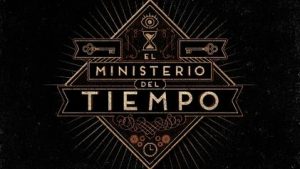
El ministerio del tiempo (English title: The Ministry of Time)
It is a Spanish fantasy television series created by Javier and Pablo Olivares. The series follows the exploits of a patrol of the fictional Ministry of Time, which deals with incidents caused by time travel.
Watch it on Netflix

La casa de las Flores (English title: The House of Flowers)
It is a Mexican comedy-drama web television series created by Manolo Caro. It depicts a dysfunctional upper-class Mexican family that owns a prestigious flower shop
Watch it on Netflix

Cuéntame cómo pasó (English title: Remember When)
It is a Spanish television drama series which has been broadcast on La 1 of Televisión Española since 2001. It is the longest running prime-time series in the history of television in Spain.
Watch it on A la Carta-RTVE
Interest to learn Spanish increases: official DELE exams in may grow 21% in London
On May 24th and 25th, Instituto Cervantes in London will hold 2019’s first set of , the official Diplomas of Spanish as a Foreign Language (DELE) Diplomas. The enrolment in these programmes is at 163 students. This figure Spanish represents a 21% increase compared to the number of students that took the same exam on the same date in 2018.
The DELE Spanish Diplomas are official qualifications certifying the degree of competence and mastery of Spanish, granted by Instituto Cervantes on behalf of Ministry of Education and Vocational Training of Spain and, Ministry of Foreign Affairs, European Unión and Cooperation of Spain.
In the 2019 DELE applications, the most popular qualification is A2 (49 applications), followed by level B1 (29 applications) and the B2 test (24 applications). The DELE examinations are designed following the guidelines of the Common European Framework of Reference for Languages (CEFR) of the Council of Europe.
The Director of the Instituto Cervantes in London, Ignacio Peyró, said of the increase: “In a country that has traditionally had little attachment for certification, these figures are very positive. The DELE is a test of great quality, and its certification is very useful for curricular purposes – these are two keys to its success”.
Additionally, the DELE diplomas are a compulsory test for Sephardic Jews who are now able to claim Spanish nationality thanks to a new law. The Law introduced in June 2015 makes the acquisition of Spanish citizenship possible for the Sephardic Jews that are descendants of those expelled from Spain in the 15th Century without renouncing their current citizenship and without requiring residency in Spain.
This is the case of Andy, a British student with Sephardic Jew ancestry who took DELE exam in February to apply for the Spanish nationality. “After the Spanish government passed the Sephardic law, I looked into my family history and my family tree and I realized that I could ask for the Spanish citizenship. I had already studied Spanish at school, I travel to Spain frequently and I have many Spanish friends, so it was not difficult for me to pass the exam,” says Andy.
The Diplomas of Spanish as a Foreign Language (DELE) are official qualifications which prove the level of proficiency in the Spanish language and which are awarded by the Spanish Ministry of Education and Science. In short, these are the only qualifications in the world to prove fluency in Spanish.
What are the advantages of having a DELE qualification?
- They are official qualifications.
- They are recognised internationally by private companies, chambers ofcommerce and public and private educational organisations.
- In Spain, they give you access to universities, official language schools, business schools and jobs with the civil service.
- They are increasingly more in demand at universities in other countries.
- They are valid indefinitely: qualifications for life.
- They comply with the guidelines of the Common European Framework (MCER).
- They make it easier for you to work and study in other countries and also to obtain grants.
«Instituto Cervantes in London organizes specific courses for the preparation of DELE candidates and they are always very well received: there are courses once a week throughout the term, but also intensive courses in the weeks prior to each call,» says Pablo Martínez Gila.
Given the good reception of the diplomas, the Cervantes Institute in London reinforces the offer of DELE preparation courses for all levels with a wide range of options in May and July.
In addition to the May session, there will be more DELE 2019 exam sessions at the Instituto Cervantes in London on these dates:
– 12 July (written exam), 12/13 July (oral exam). Levels: A2, B1, B2, C1- Registration deadline: 16 May
– 13 September (written and oral exam). Level A2 – Registration deadline: 24 July
– 22 November (written and oral exam), DELE for Young Learners: Levels: A1, A2/B1 – Registration deadline: 9 October
– 23 November (written exam), 22/23 November (oral exam). Levels: A1, A2, B1, B2, C1, C2 – Registration deadline: 9 October
Aumenta el interés por el español: los exámenes oficiales DELE de mayo crecen el 21% en Londres
Los días 24 y 25 de mayo se celebrará la primera convocatoria de 2019 en el Instituto Cervantes de Londres de los exámenes oficiales DELE, los Diplomas de Español como Lengua Extranjera. Para esta sesión el número de participantes en Londres ha alcanzado un total de 163 inscritos. La cifra supone un aumento del 21% respecto a la misma convocatoria de 2018.
En esta convocatoria del DELE, el nivel más demandado es A2, con 49 candidatos; seguido del nivel B1, con 29 candidaturas; y la prueba de B2, con 24 candidaturas. Los exámenes DELE están diseñados siguiendo las directrices del Marco Común Europeo de Referencia (MCER) del Consejo de Europa.
“En un país que tradicionalmente ha tenido poco apego por la certificación, estas cifras son muy positivas. El DELE es un examen de enorme calidad, y su certificación es muy útil a efectos curriculares -esas son dos claves de su éxito”, asegura el director del Instituto Cervantes de Londres, Ignacio Peyró.
Por otro lado, los diplomas DELE son pruebas necesarias para personas que optan a la nacionalidad española. En estas últimas convocatorias está siendo de especial relevancia el número de sefardíes que aprovechan la oportunidad del Estado español para solicitarla. El Congreso de los Diputados aprobó en junio de 2015 la Ley 12/20151, en materia de concesión de la nacionalidad española a los sefardíes originarios de España.
Este es el caso de Andy, un británico con ascendentes sefardíes que hizo el examen DELE en febrero para poder solicitar la nacionalidad española. “Tras aprobarse la ley sefardí hace cuatro años, indagué en mi historia familia y mi árbol genealógico y me di cuenta de que podía pedir la nacionalidad. Ya había estudiado español en el colegio, viajo a España con frecuencia y tengo muchos amigos españoles, así que no fue difícil para mí aprobar el examen”, comenta Andy.
Los Diplomas de español DELE son títulos oficiales, acreditativos del grado de competencia y dominio del idioma español, que otorga el Instituto Cervantes en nombre del Ministerio de Educación y Formación Profesional y Ministerio de Exteriores, Unión Europea y Cooperación de España.
En el año 2018, en el que hubo cuatro convocatorias de exámenes DELE, el total de inscritos en Londres fue de 392. Los niveles con mayor número de candidatos fueron para el B2 (101 candidatos), que acredita la competencia lingüística necesaria para entender las ideas principales de textos complejos que traten de temas tanto concretos como abstractos, incluso si son de carácter técnico, y producir textos claros y detallados sobre temas diversos.
Otros niveles con mayor número de candidatos fueron el de A2 (97 candidatos), que acredita que el candidato es capaz de comprender frases y expresiones cotidianas de uso frecuente relacionadas con áreas de experiencia que le son especialmente relevantes (información básica sobre sí mismo y su familia, compras, lugares de interés, etc.).
En el caso del nivel C1, hubo 70 candidatos en las convocatorias DELE de 2018. El diploma DELE C1 garantiza que el progreso del estudiante en el idioma se ha producido con éxito y que posee un nivel más que avanzado de español. En el caso del nivel DELE B1, que acredita la competencia lingüística necesaria para comprender los puntos principales de textos claros y en lengua estándar sobre cuestiones conocidas; describir experiencias, acontecimientos, deseos y aspiraciones; explicar planes; y justificar opiniones brevemente, hubo un total de 66 candidatos.
“El Instituto Cervantes de Londres organiza cursos específicos para la preparación de los candidatos y tienen siempre muy buena acogida: hay cursos de una vez por semana a lo largo del trimestre, pero también cursos intensivos en las semanas previas a cada convocatoria”, asegura el Jefe de Estudios del Instituto Cervantes de Londres, Pablo Martínez Gila.
Ante la buena acogida de los diplomas, el Instituto Cervantes refuerza la oferta de cursos de preparación al DELE para todos los niveles con un gran abanico de opciones en mayo y julio.
Además de la convocatoria de mayo habrá más convocatorias de exámenes DELE a lo largo del año 2019 en el Instituto Cervantes de Londres.
- El 12 y 13 de julio hay convocatoria de los A2, B1, B2 y C1. El plazo de inscripción está abierto hasta el 16 de mayo
- El 13 de septiembre hay pruebas del nivel A2 y la inscripción está abierta hasta el 24 de julio
- El 22 de noviembre tiene lugar el DELE escolar: Niveles: A1, A2 y B1. La inscripción está abierta hasta el 9 de octubre
- El 22 y 23 de noviembre hay convocatoria de los niveles A1, A2, B1, B2, C1, C2. La inscripción está abierta hasta el 9 de octubre
Cursos de verano, matrícula abierta| Enrolment Is Open For Our Spanish Summer Courses
El Instituto Cervantes ofrece cursos de español para estudiantes de todos los niveles, desde principiante absoluto hasta perfeccionamiento (A1 – C2 del MCER), cuyo objetivo es desarrollar la capacidad del alumno de comprender, hablar, leer y escribir en español.
Asimismo ofrece un amplio abanico de cursos específicos, como los cursos por Internet del Aula Virtual de Español (AVE Global), cursos de preparación del Diploma de Español como Lengua Extranjera (DELE) y de los exámenes de GCSE, AS y A2, español orientado al mundo de los negocios, traducción, cursos de lengua y cultura (literatura, historia, América Latina), conversación, pronunciación, español para niños y cursos de formación de profesores ELE. Otros cursos fuera de programa y clases particulares y en empresas también están disponibles.
El nuevo calendario de cursos del trimestre de verano 2016 ya está disponible, y el plazo de matrícula abierto. Seguiremos añadiendo nuevas fechas a lo largo del mes de junio y julio, así que no dejes de consultarlo periódicamente.
Para más información visite nuestra página web www.londres.cervantes.es o contacte con la oficina de matriculación de lunes a sábado llamando al 0207 235 0353 o al 0207 201 0750.
The Instituto Cervantes offers Spanish language courses for all levels, from complete beginners to proficiency (A1 – C2 of the CEFR), aimed at developing the students’ ability to understand, speak, read and write in Spanish.
We also offer a wide range of more specific courses such as online courses (AVE Global), courses to prepare for the DELE Spanish official exams, GCSE, AS and A2 levels, general business Spanish, translation, language & culture (literature, history, Latin America), conversation, pronunciation, Spanish for children and teacher training courses. Other courses and private and corporate tuition are available on demand.
Our summer course schedule is now available online, and enrolment is open. We will continue to add new dates throughout June and July – make sure you check back periodically.
For full details please visit our website www.londres.cervantes.es or contact the Enrolment Office, Monday to Saturday, on 0207 235 0353 or 0207 201 0750.
12 destinos en 12 meses para practicar español: mayo – 12 destinations in 12 months to practise Spanish: May
Hay más rincones hispanos en el mundo de los que podría cubrir un año entero en el aire. Por ello, cualquier elección de destino desvelaría rincones maravillosos y, a su vez, dejaría en el tintero otros tantos lugares de ensueño a lo largo y ancho del compás.
A las puertas del verano, te hacemos la primera de 12 propuestas, a razón de una al mes, sobre 12 destinos en los que el español, además de ser la lengua oficial, es la más -y a menudo la única- lengua hablada. Allí, poner a prueba tu destreza lingüística y sumergirte en la cultura local es una experiencia única.
¿Qué hacer en mayo?
Descubrir las termas de Uruguay. En el noroeste del país se esconde una de las reservas de agua subterránea más grandes del mundo. En algunas zonas, el agua emerge a temperaturas de entre 39 y 46 grados, y se dice posee propiedades beneficiosas para el control del estrés y la mejora de la salud en general. Tras regalarte una semana de bienestar, puedes dedicarle unos días a Montevideo – allí, recuerda pasarte por la feria de Tristán Narvaja y hacerte con una novela de segunda mano, de las que ya no se venden en librerías.
______________________________________________
There are more Hispanic places in the world than a year of intensive traveling can cover. Thus, any choice of destination would unveil a new, wonderful place and, at the same time, leave many other fantastic possibilities unexplored.
As we approach summer, we decided to put out the first of 12 proposals, at the rate of one a month, of 12 destinations where Spanish, besides being the official language, is the most widely -often the only- spoken language. In those destinations, putting your language skills to test and immersing yourself in the local culture is a unique experience.
What to do in May?
Discover the thermal springs of Uruguay. The northwest of the country hides one of the largest underground water reserves in the world. In some areas, the water emerges at temperatures between 39 and 46 degrees Celsius, and is said to possess beneficial properties in relieving stress and improving overall health. After treating yourself to a week-long session of well-being, you can spend a few days in Montevideo – remember to stop by the Tristán Narvaja fair and get one of the second-hand novels on display; most are no longer available in bookshops.
